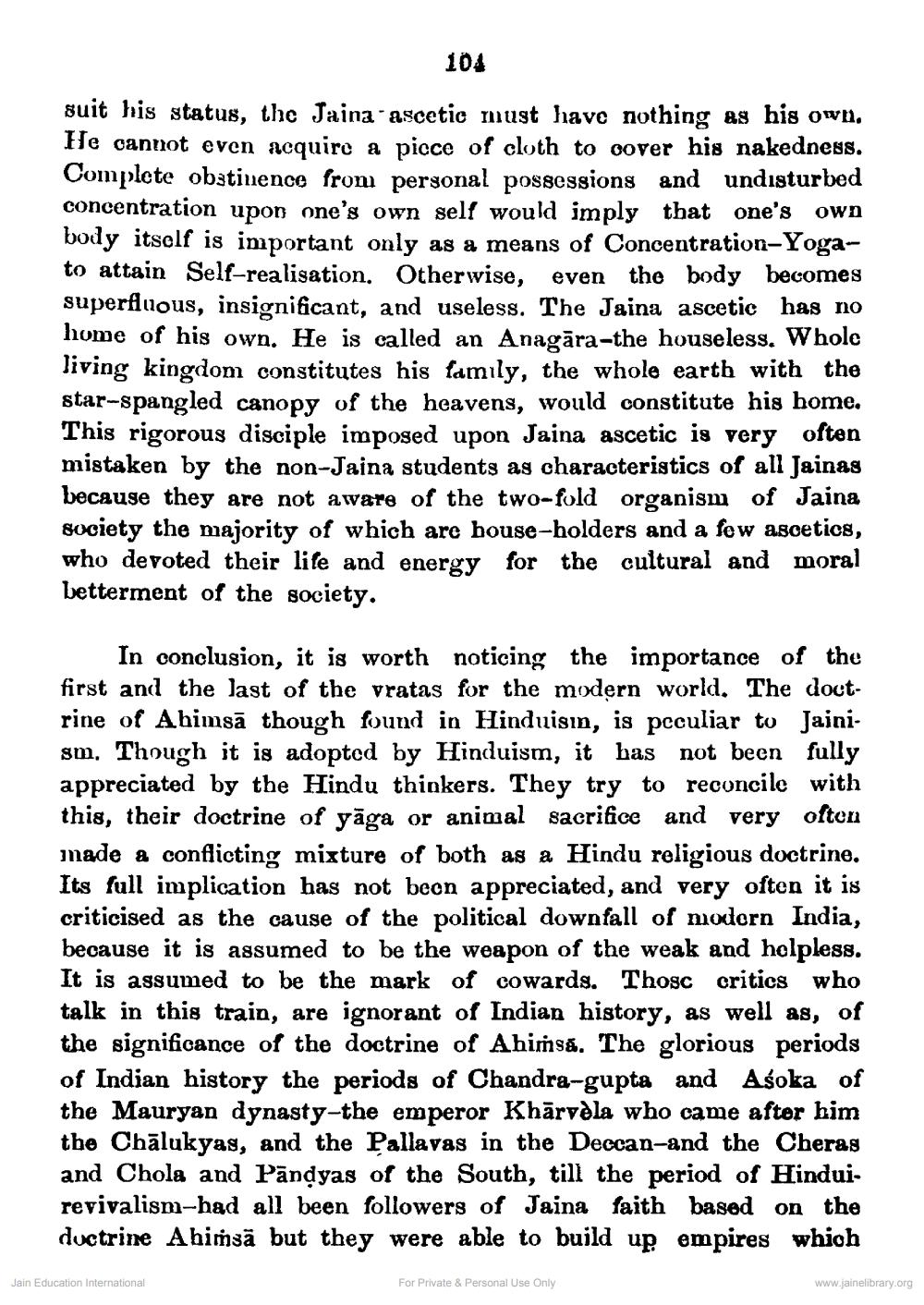________________
104
suit his status, the Jaina ascetic must have nothing as his own. He cannot even acquire a picce of cloth to cover his nakedness. Complete obstinence from personal possessions and undisturbed concentration upon one's own self would imply that one's own body itself is important only as a means of Concentration-Yogato attain Self-realisation. Otherwise, even the body becomes superfluous, insignificant, and useless. The Jaina ascetic has no home of his own. He is called an Anagāra-the houseless. Whole living kingdom constitutes his family, the whole earth with the star-spangled canopy of the heavens, would constitute his home. This rigorous disciple imposed upon Jaina ascetic is very often mistaken by the non-Jaina students as characteristics of all Jainas because they are not aware of the two-fold organism of Jaina society the majority of which are bouse-holders and a few ascetics, who devoted their life and energy for the cultural and moral Letterment of the society.
In conclusion, it is worth noticing the importance of the first and the last of the vratas for the modern world. The doctrine of Ahimsā though found in Hinduisın, is peculiar to Jainism. Though it is adopted by Hinduism, it has not been fully appreciated by the Hindu thinkers. They try to reconcile with this, their doctrine of yāga or animal sacrifice and very often made a conflicting mixture of both as a Hindu religious doctrine. Its full implication has not been appreciated, and very often it is criticised as the cause of the political downfall of modern India, because it is assumed to be the weapon of the weak and helpless. It is assumed to be the mark of cowards. Thosc critics who talk in this train, are ignorant of Indian history, as well as, of the significance of the doctrine of Ahimsá. The glorious periods of Indian history the periods of Chandra-gupta and Asoka of the Mauryan dynasty-the emperor Khārvèla who came after him the Chālukyas, and the Pallavas in the Deccan-and the Cheras and Chola and Pāndyas of the South, till the period of Hindui. revivalism-had all been followers of Jaina faith based on the ductrine Ahimsā but they were able to build up empires which
Jain Education International
For Private & Personal Use Only
www.jainelibrary.org




